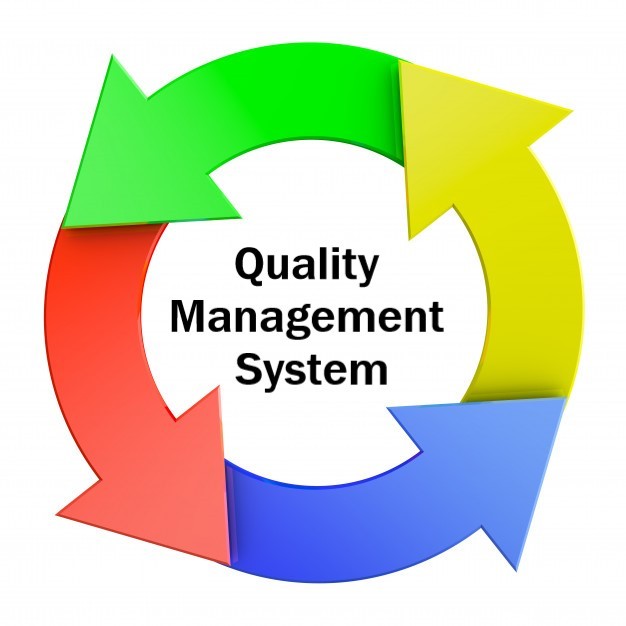Introduction
In a world where quality has become a major issue, the evolution of practices is striking. Just as the restaurant industry had to transform its delivery services to meet growing customer expectations, the field of clinical trials has undergone a similar transformation in its pursuit of excellence.
Quality Management (QM), is defined as "the process of overseeing all tasks and activities within an organization to ensure the desired level of excellence," takes on particular importance in the context of clinical trials [1].
If a restaurant must ensure the quality of its service to satisfy its customers, a clinical trial must guarantee an impeccable level of quality to protect participant’s safety and ensure data reliability.
The ICH-GCP principles, clearly establish that every aspect of a clinical trial must be governed by systems and procedures that ensure quality [2].
This requirement is embodied in the four fundamental pillars of the Quality Management System (QMS):
- Quality Planning: defining scientific and ethical standards
- Quality Control: monitoring protocol compliance
- Quality Assurance: implementing preventive procedures
- Continuous Improvement: optimizing processes
This structured approach not only meets regulatory requirements but also ensures participant protection and the integrity of scientific data.
Fundamental Principles of Quality Management in Clinical Trials
In the field of quality, the fundamental principles established as an essential framework for any organization aiming to enhance its performance. These seven principles do not follow a strict hierarchy but rather complement each other to create a coherent system [3].
- Customer Focus
In clinical trials, customer focus translates into the protection of participants. As stated by ICH GCP in Principle 2.3: “The rights, safety, and well-being of the trial subjects prevail over the interests of science and society” [2]. This absolute priority given to participants exemplifies customer focus in its most ethical form. - Leadership
Leadership is embodied in the responsibility of investigators and sponsors. ICH-GCP specifies in Principle 2.8 that “each individual involved in conducting a trial should be qualified by education, training, and experience to perform his or her respective task” [2]. This requirement emphasizes the importance of competent and committed leadership. - Engagement of People
Staff engagement is demonstrated through the essential training of all stakeholders. Principle 2.4 of ICH-GCP states that “clinical research should be conducted in accordance with recognized scientific principles”, which implies ongoing training and full commitment from the teams [2]. - Process Approach
The process approach is particularly evident in the management of clinical trials, where Principle 2.13 mandates that “systems with procedures that ensure the quality of every aspect of the trial must be implemented” [2]. This systemic approach ensures consistency and reliability of results. - Continuous Improvement
Continuous improvement is reflected in the obligation for constant monitoring of trials. Principle 2.11 specifies that “all clinical trial information must be recorded, handled, and stored”, enabling ongoing analysis and improvement of practices [2]. - Evidence-Based Decision Making
Evidence-Based decision-making is at the core of clinical trials. ICH-GCP emphasizes in Principle 2.1 that “clinical trials should be conducted in accordance with ethical principles originating in the Declaration of Helsinki”, underscoring the importance of a scientific, evidence-based approach [2]. - Relationship Management
Relationship management is demonstrated in the coordination among various actors. Principle 2.2 highlights that “before a trial begins, foreseeable risks and inconveniences should be weighed against the anticipated benefit for the trial subject and society”, illustrating the importance of balanced management of relationships with all stakeholders [2].
Common Pitfalls and Proven Solutions
Quality management, while essential for any organization, is often prone to significant pitfalls. According to an in-depth study conducted by Master Control (2023) involving 152 quality professionals in the life sciences sector, five major recurring errors stand out and warrant close attention [4].
The first and most significant issue is the persistence of manual, paper-based processes.
This traditional approach, still widely used, creates multiple complications in document management, particularly in terms of storage, version control, and team collaboration. Training tracking, often managed through spreadsheets, becomes especially cumbersome in this context.
The second issue lies in overly time-consuming quality administration.
One-quarter of respondents highlight this as a major problem, especially in the context of quality system validation, where time saved through automation can paradoxically be lost in excessively stringent validation processes.
Audit and inspection management are the third critical points.
Twenty-four percent of respondents report significant challenges in this area, particularly in balancing the scheduling of regular audits with preparation for unannounced inspections. This challenge has become more complex with the rise of remote audits following the COVID-19 pandemic.
The fourth area of concern is the cost of quality.
According to the American Society for Quality (ASQ), cited in the study, the cost of non-quality can represent between 10% and 15% of operations in a high-performing company. This figure underscores the importance of a preventive investment in quality rather than a reactive approach following major incidents.
Finally, the fifth pitfall is the limited visibility of quality system data.
Manual data compilation, a potential source of errors, and the use of outdated data for decision-making compromise the overall effectiveness of the quality system.
Considering these major challenges, it is crucial to identify and implement effective quality management systems (QMS) tailored to organizational needs, that is why some concrete examples of proven QMS models across various industries can help overcome these obstacles.
ICH Q10 guidelines
The ICH Q10 guideline presents a comprehensive model for a Pharmaceutical Quality System (PQS) that is harmonized internationally. This system is grounded in ISO quality concepts while integrating good manufacturing practices (GMP), complementing the ICH Q8 guidelines on pharmaceutical development and ICH Q9 on quality risk management [5].
The PQS is centered around three main objectives:
- producing products that meet expectations
- maintaining a state of control
- fostering continuous improvement.
To achieve these objectives, the system relies on two essential facilitating elements: knowledge management and quality risk management.
PQS encompasses the entire product lifecycle, from pharmaceutical development to product discontinuation, including technology transfer and commercial manufacturing. For each of these stages, the application of the system must be proportional and tailored to specific objectives.
Leadership plays a central role in this system. Management must demonstrate its commitment, establish a clear quality policy, ensure effective resource management, maintain efficient internal communication, and conduct regular system reviews. Additionally, management is responsible for overseeing outsourced activities.
It is important to note that this guideline does not create new regulatory requirements beyond existing GMPs. It applies to both active substances and finished products and emphasizes a risk-based approach. The entire system should be documented in a Quality Manual that outlines the quality policy, the scope of the system, and the associated responsibilities.
Conclusion
To conclude, quality management is a crucial concern for organizations, particularly in sensitive areas like clinical trials. The evolution of quality practices, supported by fundamental principles such as customer focus, leadership, and continuous improvement, forms the foundation of an effective quality management system.
However, challenges persist, including reliance on manual processes, administrative burdens, and the costs associated with non-quality. These pitfalls can compromise data integrity and participant safety. The adoption of proven models, such as the ICH Q10 Pharmaceutical Quality System, provides a robust framework to overcome these obstacles by integrating knowledge management and quality risk management practices.
To succeed, organizations must commit to documenting their systems, training their teams, and establishing clear processes. By avoiding common pitfalls and adopting a proactive approach, they can not only ensure regulatory compliance but also foster a sustainable culture of quality that benefits both participants and the integrity of scientific outcomes.
References:
[3] ISO: Quality management principles




